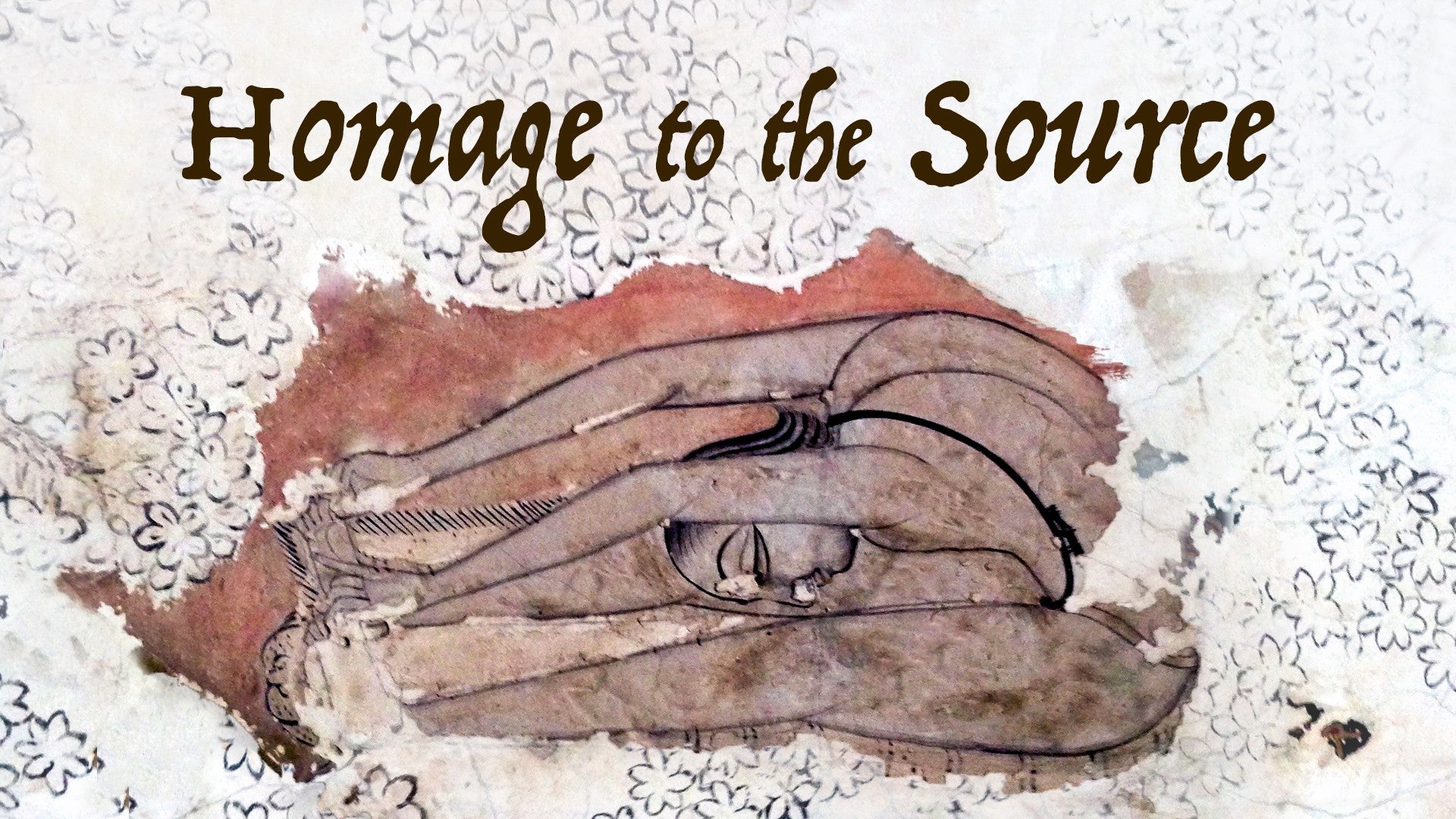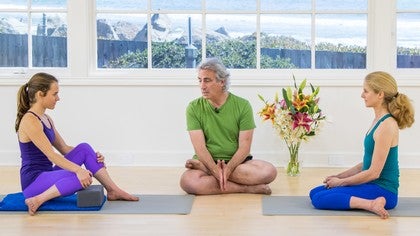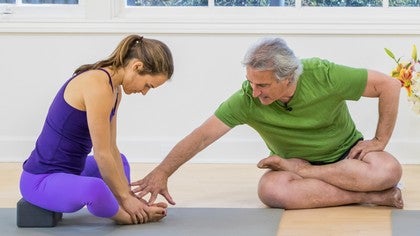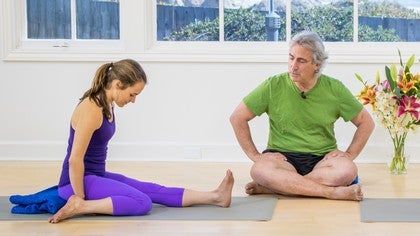Description
Richard introduces us to the traditional posture of Kurmasana (Tortoise Pose). An asana that can be demanding on the ankles and knees, Alana and Betsy offer variations using the support of a blanket and block.
About This Video
Transcript
Read Full Transcript
Hi, I'm here with my good friends Betsy and Ilana, and we are going to demonstrate the tortoise. Now this is a very interesting pose because some of you may know that the modern version of Karmasana is nothing like the traditional version. So what this shows us is that the names of the poses are very fluid sometimes, and sometimes they'll show one position, sometimes they'll show another position. In case you don't know, the modern version of Karmasana is sort of a deep forward bend, whereas this version, as you'll see, is a sitting position. Now the problem with tortoise is that it's quite a difficult pose for many people to do because of the inflexibility in the ankles.
So let's have Betsy start. She's going to lean forward, she's sitting in Vajrasana right now, and she'll slide her feet apart, and then she'll turn her feet out. In other words, she'll invert her feet so that she's sitting on the inner edges of the feet. Now she's making this look a lot easier than it actually is. You can see that from the front, if you could see her from the front, you would see that her feet look a little bit like the flippers of a tortoise. And if she took her feet a little bit wider apart, heels away from the buttocks a little bit more, if she could do that.
This is a traditional pose called Garudasana. You may know that Garudasana nowadays is a standing pose, it's sort of a pretzel-y pose, all twisted up together. But in the old days, Garudasana was a sitting pose like this, and you can see now that if you can see her from the front, her feet look like the spread wings of an eagle. So Betsy is sitting in the traditional version of Karmasana. Now for the less experienced students, this is what I'd like you to try.
Ilana will sit on her heels like this, and now she'll shift over and take her right foot out to the side, and then she'll turn her foot out. But what I would like you to do is to raise her knee up on this block as she sits back on the floor. Just like that. She's also making this look a lot easier than it actually is. She doesn't really need the block under her knee, but this is just for demonstration purposes.
So again, this will begin the stretch on the inner ankle. What you may find yourself doing is sort of slumping back onto your tailbone, in which case you want to raise the knee up even a little bit higher and put the block onto its sides. You want to stay for as long as you can bear it right at first, but you want to build up the time slowly over time. Now to come out of this exercise, it's very important that you do it in the way that's about to be demonstrated. So the first thing to do is to take your hand and hold onto the knee, and then you want to physically pick the knee up and be careful.
Stretch the leg straight out so there's no rotary movement in the knee joint. Remember, the knee joint is a hinge, not a ball and socket joint. And then you can swing the leg back to center and then bring it back, and let's try the other side. So again, you have to be very careful with this one. Bring the leg back, turn the foot out, and then again put the block underneath the knee.
Very nice. And again, you want to stay, at first it won't be a very happy pose, and you'll have to just decide for yourself how much time you want to put into it. But gradually you can build up the time. It gets a little bit easier. And as it does, you can then start to lower the height underneath the knee, bring it down on less of a height, until finally you can let the knee sit down on the floor. Why don't you try that and see how that works.
Yes, you can do that. But still, you want to be very careful as you do that to bring the knee down more and more toward the floor. And then again, I will remind you, use the hand to pick the knee up, and then stretch the knee straight out to the side so there's no rotary movement in the hinge joint. And then swing the leg back to center from the hip. Very nicely done.
And then if you would lean forward please and lift your buttocks off the floor and swing your feet together, painfully together, and sit back on your heels, that's it. Very nicely done. Thank you very much. This is called Kormasana, the Tortoise.






You need to be a subscriber to post a comment.
Please Log In or Create an Account to start your free trial.